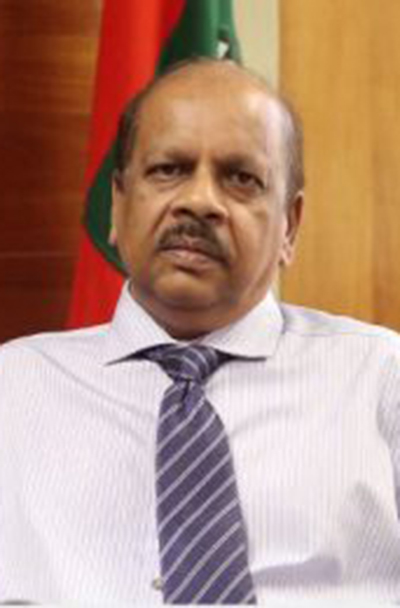Due to the COVID-19 impact globally, especially on the oil market, Guyana’s projected 2020 growth rate has been revised from 87% to 57%, Governor of the Bank of Guyana Dr Gobind Ganga said on Friday, while also confirming that the non-oil sector is headed to negative growth.
“Our growth rate with oil was about 87% projected, non-oil growth would have been 5% or just about there. Our inflation rate would have been very, very low single digit (below 1%) and we would have had an increase in reserves. Our exchange rate, we expected that to remain stable. With oil after COVID, we would have projected a 57% growth rate…,” Ganga told a Caribbean Economic Forum, hosted by the Bank of Barbados and where he was one of four Caribbean governors.
Guyana’s Central Bank governor spoke on the topic COVID and Economic Policy Protecting Jobs, Businesses and the Economy at the forum, which was moderated by journalist Julian Rogers. The other three panelists were Governors Timothy Antoine, of the Eastern Caribbean Central Bank, Richard Byles, of the Bank of Jamaica, and Cleviston Haynes of the Central Bank of Barbados.
Ganga said that while the projected growth target has been significantly reduced, this country is still very grateful that it is projected to be the regional leader in terms of economic growth as a result of newly started oil production.
He, however, lamented that other sectors would be negatively impacted.
“The non-oil growth we are now looking at negative five to seven per cent. It could even be more if this [COVID-19] is prolonged, because these major sectors would have been hit, such as the services sector, education, administration, transport… likewise wholesale and retail, manufacturing and agriculture,” he said.
He added that without oil, this country would not have been coming out looking “glorious” and would have suffered the same fate as its regional sister countries which have taken an economic battering due to COVID-19.
But he was optimistic, saying “that doesn’t mean everything is gone” and “we are still looking forward for some stability”.
Guyana, according to Ganga, has put a number of fiscal and monetary policies in place to help cushion the adverse effects of the disease that has seen hundreds dead in the region and many unable to leave home to earn an income.
He said that the aim is to have a welfare programme that allows for diversification and to ensure that citizens have productive and decent jobs. “We are talking about not only building resilience within the family but the country and that will spill into the region,” he said.
Pertaining to fiscal cushioning measures here, he explained, “On the fiscal front, we would have had the removal of VAT on utilities, paying pensions earlier, removing excise duties on sanitizing products… we were trying to provide more disposable income to ensure a basic indirect transfer so one would be able to do the necessary adjustment for welfare improvement There has been deferral of tax payments for firms too…”
“On the monetary perspective, you know, if you don’t have an enabling …financial system you will not have growth…we would have provided a moratorium of six months, in terms of credit facility, for the repayment of loans, especially for those firms and individuals affected by COVID. We continue with a very accommodative monetary policy to ensure enough liquidity in the system that whoever wanted to borrow could borrow while at the same time inflation is being checked,” he added.
As it pertains to this country’s reserves, Ganga said that government had projections but again this was impacted when the price of oil fell to all-time lows on the global market. “Because of the impact on both oil and non-oil prices for some of our commodities, we were not able to do that but we would have that room as we go ahead,” he said.
While Guyana received US$54.9 million for its first 1-million barrel lift in February, it got only US$35 million by the time of the second lift in May as global prices plummeted from around the US$54 per barrel oil to the low US$30s. It also received US$4,909,505 in royalty payments for the first quarter.
The Ministry of Finance yesterday informed that this country earned US$7,800 in interest for the first quarter of this year on the US$54.9 million that was at the time in Natural Resources Fund.
“This represented a return of 0.014% during the quarter reflecting the decline in interest rates,” the Ministry said.
Nonetheless, he said that the central bank would have provided “that confidence …that confidence that we have a sound banking system.”
Guyana’s economy grew by 4.7% last year, surpassing the 4.4% projection.






